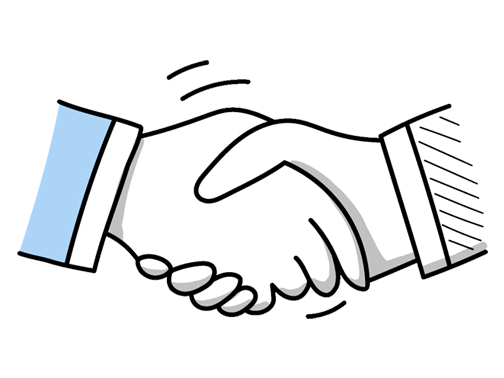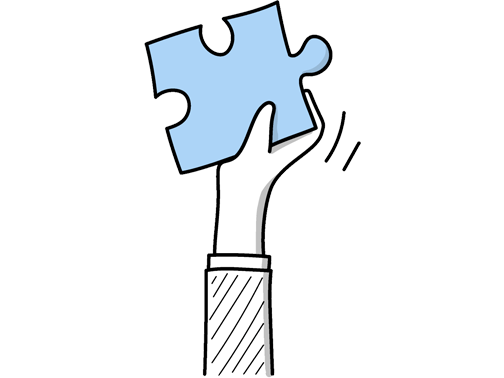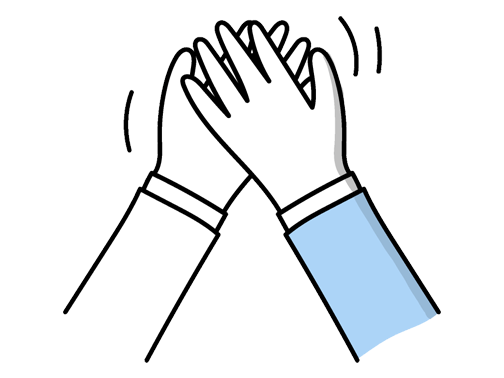Print Production Assistant Interview Questions (2025 Guide)
Find out common Print Production Assistant questions, how to answer, and tips for your next job interview
Practice Interviews Online - Identify your strengths and weakness in a realistic Print Production Assistant mock interview, under 10 minutes
Practice Now »Print Production Assistant Interview Questions
This interview question gauges your ability to maintain clear, proactive communication to ensure print projects meet everyone’s expectations. You need to say that you actively listen and ask clarifying questions, provide regular progress updates, and coordinate with all team members and clients to align on goals and resolve issues promptly.
Example: To keep print projects on track, I make sure to really listen to what both the team and clients are saying, so I fully understand their needs. I keep everyone informed with regular updates, especially if any issues come up. For example, if a design tweak affects timing, I quickly coordinate with print suppliers and the client to adjust expectations and ensure the final product matches what they envisioned.
Questions like this assess your problem-solving skills and how you handle technical issues under pressure. You need to explain that you carefully check printer settings to find the cause, follow clear steps like restarting equipment to fix errors, and keep your team or clients informed about any delays or solutions.
Example: When a printing issue arises, I start by carefully assessing the problem to understand what’s causing it—whether it’s a software glitch, a hardware fault, or a file error. I then methodically work through potential fixes, like checking settings or recalibrating machines. Throughout the process, I keep the team informed to ensure transparency and efficiency. For example, once I spotted a colour mismatch early by cross-checking proofs, avoiding wasted prints.
What they want to know is if you can handle the entire print production workflow and manage challenges effectively. You need to briefly describe how you organized the project timeline, solved any issues that arose, and ensured quality control throughout the process.
Example: Yes, I led a print project for a marketing brochure, coordinating with designers, printers, and suppliers to keep everything on schedule. When a paper delivery was delayed, I quickly found an alternative supplier to avoid downtime. I also reviewed proofs carefully to ensure colours and layouts met the brand’s standards, which helped deliver a polished final product on time and within budget.
This question helps the interviewer understand how you handle real-world problems in print production and your problem-solving skills. You need to describe a specific challenge you faced, explain the steps you took to resolve it, and highlight the positive results of your actions.
Example: One challenge I faced was tight deadlines with last-minute changes to print specs. To manage this, I coordinated closely with designers and suppliers, prioritising tasks and double-checking details to avoid errors. This approach helped keep projects on track and ensured high-quality results, even under pressure. For example, during a rush campaign, clear communication prevented delays and the final prints met all client expectations smoothly.
This question assesses your ability to multitask and prioritize under pressure, which is crucial in print production. In your answer, explain how you organized tasks, communicated with your team, and ensured deadlines were met efficiently.
Example: In a previous role, I often juggled several print projects at once, from brochures to posters. I prioritised by deadlines and check-in regularly with the team to ensure everything stayed on track. For example, coordinating with suppliers and designers early helped avoid last-minute issues, making the process smoother and meeting all delivery dates without compromising quality.
What they want to know is how you keep communication clear to avoid costly errors and delays in print production. You should say you actively listen and confirm instructions, use tools like checklists or visual aids to ensure clarity, and promote teamwork through regular meetings to solve problems together.
Example: In a print production setting, I focus on really listening to what the team needs and any concerns they raise. I make sure updates and instructions are straightforward and easy to follow, whether written or verbal. Encouraging everyone to share their ideas openly helps us solve issues quickly and keeps the process moving smoothly—like when we worked through a last-minute change by brainstorming together and avoiding miscommunication.
This question helps the interviewer see your problem-solving and organizational skills under pressure. You need to describe a specific challenging project, how you planned and prioritized tasks, and how you ensured quality and timely delivery.
Example: In a previous role, I coordinated a brochure redesign involving tight deadlines and multiple suppliers. I kept clear communication with designers, printers, and the client to ensure everyone stayed aligned. When a last-minute artwork change came in, I quickly liaised with the printers to adjust without delaying delivery. Staying organised and proactive helped the project run smoothly from start to finish.
Hiring managers ask this question to see how well you collaborate, communicate, and solve problems within a team setting. You need to explain how you coordinated tasks, kept everyone informed, and handled any challenges to ensure the project was completed on time.
Example: In a previous role, I worked closely with designers and printers to meet a tight deadline for a brochure. We kept communication open, quickly addressing issues like colour mismatches by coordinating adjustments together. By staying connected and flexible, we ensured the final print was delivered on time and to the client’s expectations. It felt rewarding to see how teamwork helped us navigate challenges smoothly.
Hiring managers ask this to gauge your technical skills and ensure you can handle the tools essential for print production. You need to mention specific software like Adobe InDesign, Photoshop, or Illustrator and briefly note your level of proficiency with them.
Example: I’m comfortable working with industry-standard tools like Adobe Photoshop, Illustrator, and InDesign, which I’ve used to prepare and proof layouts. I also have experience with Acrobat for checking PDFs and ensuring files are print-ready. In a previous role, I often collaborated with the team using these programs to streamline the production process and maintain quality throughout.
Interviewers ask this question to see how you handle real challenges and your problem-solving skills under pressure. You need to clearly describe the problem you faced, the specific actions you took to fix it, and the positive result or lesson learned from the experience.
Example: During a recent print run, a colour mismatch was spotted last minute. I quickly compared proofs to the original specs, identified a calibration issue, and liaised with the press operator to adjust settings. This collaboration ensured the final prints matched expectations without delaying delivery. The experience highlighted the importance of thorough checks and clear communication in maintaining quality under tight deadlines.
What they want to know is how you manage multiple tasks efficiently to meet tight print production deadlines without causing delays. You need to say that you prioritize tasks based on urgency and impact, communicate clearly with your team about progress and issues, and proactively solve problems before they affect the deadline.
Example: When managing print production, I start by identifying which tasks have tight deadlines or biggest impact on the project. I stay in close touch with the team to ensure everyone’s aligned and any issues are spotted early. If a problem arises, I tackle it quickly to keep things moving smoothly. For example, if a supplier delays materials, I communicate immediately to adjust schedules and avoid last-minute rushes.
Employers ask this to gauge your hands-on experience with various print materials and processes. In your answer, briefly describe specific print projects you've handled and highlight your role in each to show your practical knowledge.
Example: I’ve had the chance to work on a variety of print projects, ranging from promotional brochures and flyers to large-format posters and event programmes. One memorable project involved coordinating print runs for a local arts festival, ensuring deadlines were met and quality stayed consistent. It’s always rewarding to see the final product come together and know that it effectively communicates the intended message.
Hiring managers ask this question to assess your hands-on skills and reliability in managing essential machinery. You need to highlight specific machines you’ve operated, your routine maintenance tasks, and your ability to troubleshoot common issues efficiently.
Example: In previous roles, I’ve regularly handled various printing machines, ensuring they run smoothly and troubleshooting minor issues quickly. For example, at my last job, I maintained ink levels, aligned print heads, and performed routine cleanings to avoid delays. I find staying attentive to the equipment’s condition helps maintain quality and efficiency, which is essential in a fast-paced print environment.
Employers ask this to see if you proactively keep up with industry changes to enhance production quality and efficiency. You should say that you regularly follow industry news and websites and apply new technologies or methods to improve print processes.
Example: I regularly follow industry blogs and attend webinars to keep up with new print technologies. Recently, I learned about eco-friendly inks through a webinar, which I suggested we trial to reduce waste. I also connect with peers at events to share insights. Staying informed helps me bring fresh ideas that improve efficiency and quality, and I’m always eager to learn and adapt as the industry evolves.
Employers want to see that you can manage time effectively and keep track of deadlines under pressure. You need to explain that you assess each job’s urgency and complexity, then organize your work to ensure timely, high-quality completion.
Example: When managing several print jobs at once, I start by assessing deadlines and job complexity to identify urgent tasks. I communicate clearly with the team to ensure everyone’s on the same page and adjust plans if unexpected changes arise. For example, if a large brochure and a quick flyer are due, I’d focus on finishing the flyer first to meet the tight deadline, then shift attention to the brochure without compromising quality.
Employers ask this question to see how well you can organize and manage multiple tasks under tight deadlines. You should say that you use digital calendars and project management tools like Trello or Asana to schedule and track print deadlines and progress efficiently.
Example: I rely on a combination of digital tools like project management software alongside traditional methods such as detailed checklists. This helps me stay on top of deadlines and quickly adjust when unexpected delays happen. For example, if a supplier’s delivery is late, I can reshuffle priorities and communicate updates clearly to the team, ensuring the production stays on track without compromising quality.
This question helps the interviewer understand how you maintain high standards and prevent costly mistakes in print production. You should say that you perform regular checks at each stage, communicate clearly with your team and suppliers to confirm details, and keep records of any issues to improve future work.
Example: To maintain quality in print production, I regularly check each stage to catch any issues early on. I keep an open line of communication with both the team and suppliers to ensure everyone’s on the same page regarding standards. Whenever a problem arises, I take note, so we can adjust processes and prevent it from happening again. For example, spotting colour mismatches early saved a project from costly reprints.
Questions like this assess your ability to accept input constructively and adapt quickly. You need to say that you listen carefully, stay open-minded, and use feedback to improve the final product efficiently.
Example: I welcome feedback as a chance to improve the final product. When clients or team members suggest changes, I listen carefully to understand their perspective and clarify any points if needed. For example, in a past project, adjusting print colours after client input helped us deliver exactly what they wanted. Staying open and adaptable ensures the project meets everyone’s expectations smoothly.
This interview question helps employers understand your hands-on skills and familiarity with print production processes. You need to clearly describe your specific tasks, tools used, and any relevant achievements in your previous print production roles.
Example: In my previous role, I supported the production team by managing print schedules and coordinating with suppliers to ensure deadlines were met. I gained hands-on experience preparing files for print and conducting quality checks, which helped reduce errors. For example, I assisted in producing marketing materials that consistently met brand standards and were delivered on time, contributing to smooth project workflows.
What they want to know is that you can handle conflicts by listening carefully, communicating calmly, and finding solutions that keep the project on track. You should say that you listen to everyone's concerns, explain your views clearly without causing tension, and stay flexible to adjust plans so the team can meet deadlines smoothly.
Example: When disagreements arise, I focus first on hearing everyone’s point of view to really understand the issue. Then, I keep communication calm and clear, aiming to find a solution that works for everyone. For example, in a previous print project, we adjusted deadlines slightly after discussing concerns, which helped the team stay on track without sacrificing quality. Being flexible and open helps the project run smoothly and keeps the team motivated.
This question tests your ability to balance speed and quality under pressure, which is crucial in print production. You need to say that you prioritize urgent tasks, carefully check print settings and proofs, and keep communication open with your team and clients to meet deadlines without sacrificing quality.
Example: When urgent print jobs come in, I quickly assess everything that’s on hand and focus on what needs finishing first, making sure to double-check details along the way to keep quality sharp. I also keep the team and clients in the loop about progress and any potential hiccups. For example, in a previous role, this approach helped us deliver last-minute brochures flawlessly and on schedule.
Interviewers ask this to see if you understand the technical aspects of preparing print files correctly. You should explain that you carefully check file formats, ensure images and fonts are embedded, and verify color settings to meet printing requirements.
Example: When handling file formats, I ensure compatibility by checking specs early, converting files if needed, and confirming fonts and images are embedded. For pre-press, I carefully review layouts, colour profiles, and bleed settings to avoid surprises. Once, preparing a brochure, I caught a missing image link that saved time and costs. Being detail-focused and proactive helps keep everything smooth before printing.
Hiring managers ask this question to see how you handle pressure and organize tasks to meet tight deadlines, which are common in print production. You need to explain how you planned your schedule, communicated with your team, and adapted when issues arose to complete the project on time.
Example: In a previous role, I had to deliver a brochure on a very tight deadline. I quickly mapped out key tasks, checked in regularly with designers and printers to keep everyone aligned, and adjusted the schedule when unexpected delays came up. By staying calm and flexible, we managed to get everything printed on time without sacrificing quality, which really showed me the value of clear communication and staying organised under pressure.
This question assesses your ability to stay organized, flexible, and communicative when facing pressure in print production. You need to explain how you prioritize tasks, adapt to last-minute changes, and work with your team to meet deadlines efficiently.
Example: When deadlines tighten or plans shift unexpectedly, I focus on staying organized and assessing what needs immediate attention. I keep communication open with the team to adjust priorities quickly and ensure everyone’s aligned. Once, a last-minute design change came in just hours before print; by collaborating closely and staying calm, we managed to update everything without compromising quality or delivery times.
This question assesses your understanding of the technical steps and attention to detail needed for high-quality prints. You need to explain that you check color profiles, calibrate monitors and printers, and proof colors before final printing to maintain accuracy.
Example: To ensure colour accuracy, I start by calibrating monitors and using colour profiles suited to the printer and paper type. I check proofs carefully, comparing them to the original design and making adjustments as needed. For example, in a recent project, slight tweaks to the CMYK values helped match the client’s branding perfectly before full print run. Communication with the printer is key throughout to maintain consistency.
Ace your next Print Production Assistant interview with even more questions and answers
Common Interview Questions To Expect
The interviewer is looking for your understanding of the role, company, and industry. They want to see how your skills and experience align with the position and how motivated you are to contribute to the team.
Example: I'm really excited about this role because I have a strong background in print production and I love the fast-paced environment of the industry. I've done my research on your company and I admire your commitment to quality and innovation. I believe my skills and experience would be a great fit here and I'm eager to contribute to your team.
Candidates can answer by stating a specific salary range, mentioning their flexibility, or asking about the company's budget. Interviewers are looking for candidates who are realistic, confident, and have done their research on industry standards.
Example: I've done some research and I believe the industry standard for a Print Production Assistant in the UK is between £20,000 to £25,000 per year. I'm flexible and open to negotiation based on the responsibilities and benefits offered by the company. Can you provide me with more information about the salary range for this position at your company?
The interviewer is looking for a clear explanation of the reasons behind your decision to change career paths. Be honest, highlight relevant skills, experiences, and motivations.
Example: I decided to change career paths because I wanted to pursue a role that allowed me to utilize my creativity and attention to detail more effectively. My background in graphic design and passion for print production made me realize that this role as a Print Production Assistant was the perfect fit for me. I am excited to bring my skills and experiences to this new opportunity.
The interviewer is looking for examples of how you prioritize tasks, manage your time effectively, and handle stress in a fast-paced environment. Be honest and provide specific examples from your past experiences.
Example: Yes, I am definitely able to handle multiple responsibilities at once. In my previous role as a Print Production Assistant, I was responsible for coordinating print jobs, managing inventory, and communicating with clients all at the same time. I prioritize tasks based on deadlines and importance, which helps me stay organized and efficient.
The interviewer is looking for honesty, accountability, problem-solving skills, and the ability to learn from mistakes. Different ways to answer could include discussing a specific mistake, explaining how it was resolved, and reflecting on what was learned from the experience.
Example: Yes, I once accidentally sent a print job to the wrong printer, causing a delay in production. I immediately notified my supervisor, took responsibility for the error, and worked with the team to quickly rectify the situation. From that experience, I learned the importance of double-checking details and communicating effectively with my colleagues.
Company Research Tips
The company's website is a goldmine of information. Look for details about the company's history, mission, values, and culture. Pay special attention to any information related to their print production processes, technologies they use, and any recent projects or clients they've worked with. This will give you a good understanding of what they do and how they do it, which will allow you to tailor your responses during the interview to show how you can add value.
Tip: Don't just stick to the 'About Us' page. Explore the entire website, including their blog, news section, and any downloadable resources they might have.
Social media platforms can provide a wealth of information about a company. Look at their LinkedIn, Twitter, Facebook, and Instagram pages to get a sense of their brand voice, how they interact with customers, and any recent updates or news. For a Print Production Assistant role, LinkedIn could be particularly useful to understand the company's professional network and the backgrounds of people who work there.
Tip: Look at the comments and reviews on their social media posts. This can give you insights into how they handle customer service and any potential issues they might be facing.
Understanding the industry trends can help you speak intelligently about the challenges and opportunities the company might be facing. Look for news articles, industry reports, and trend analyses related to print production in the UK. This will not only show that you've done your homework, but also that you're proactive and interested in the industry.
Tip: Use Google Alerts to stay updated on the latest news and trends in the print production industry.
Understanding the company's competitors can give you insights into the market they operate in and how they differentiate themselves. Look for information on who the main competitors are, what they offer, and how the company you're interviewing with stands out. This can help you understand the company's unique selling proposition and how they position themselves in the market.
Tip: Use tools like SimilarWeb or Alexa to get insights into competitors' web traffic and online strategies.
What to wear to an Print Production Assistant interview
- Smart casual attire
- Clean, pressed trousers or skirt
- Polished shoes, not too flashy
- A neat, collared shirt or blouse
- Light makeup and minimal jewelry
- Avoid overly bright colors
- Carry a professional bag or briefcase
- Neatly styled or tied back hair
- Avoid strong perfumes or colognes
- Bring a portfolio of your work





